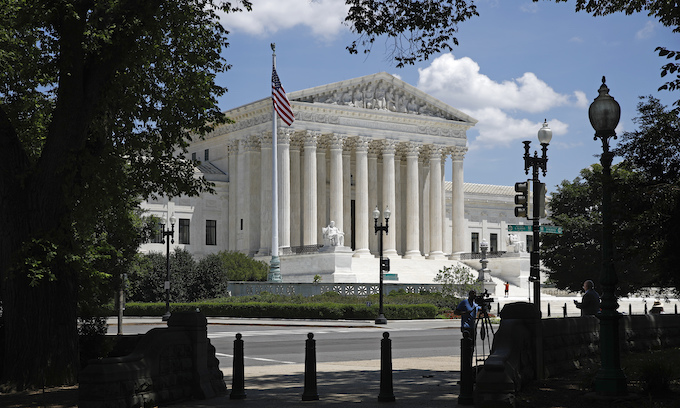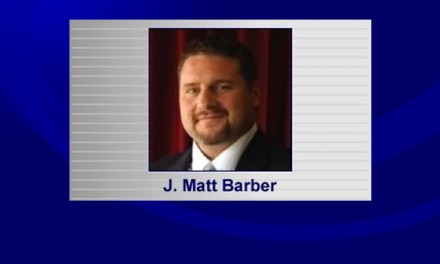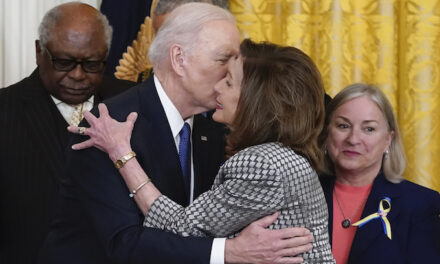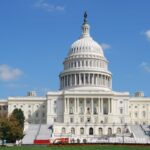“Deciding when not to decide is, of course, among the most important things done by the Supreme Court. It takes a lot of doing, but it can be done.” –Supreme Court Justice Thurgood Marshall
Since Roe v. Wade in 1972, public commentary on Supreme Court decisions and opinions from the media reveal a far greater investment in the preferred outcome than meticulous legal rulings from the Supreme Court. While these decisions have real consequences, and may be irreversible, using the court to achieve legislative objectives on virtuous issues is not advisable and not constitutional.
Today, Americans are more interested in the moral outcomes than court legal decisions when they refer moral dilemmas to the Court. By framing them to “sound legal,” they ask the Court to validate or invalidate moral behavior. This pits the Court against the Constitution since it is a judicial body appointed to rule on constitutionally legal issues, not to make decisions for legislative dysfunctions.
We always hear, “Life, Liberty, and Pursuit of Happiness” are Constitutional rights. Yet only liberty and life are protected by the 5th Amendment, not happiness. We think we are innocent until proven guilty,” but that is not a “right” in our Constitution, it is a British law. While the bill of rights defines our rights, the states have authority to administer them and grant additional rights.
“Nothing in the world is more dangerous than sincere ignorance and conscientious stupidity.” – Martin Luther King
Everyone who has seen the cost of their health insurance premiums, medications and deductibles skyrocket and had to search for bargain health insurance dislikes the Court’s Obamacare ruling. When Chief Justice John Roberts turned Obamacare’s mandate into a tax, he saved Obama’s “behind.” But those who’ve read the Constitution know healthcare does not appear anywhere in the Constitution.
Article I, Section 7, of the Constitution states: “All bills raising revenue shall originate in the House of Representatives.” The power to tax was put in the hands of the body that directly represented the people. No other branch of government can tax. Ruling on the illegal mandate and the penalty for those having good insurance was the only authority Justice Roberts and this Court legally had.
“The Court shall not allow any political or civil group to influence our decisions.” –Justice Roberts
The 10th Amendment to the U. S. Constitution defines federalism and clarifies that “all powers not granted to federal judicial or legislative branches belong to the states; or states rights.” Therefore, all healthcare laws are the exclusive responsibility of individual states; not the federal government.
The Supreme Court was fashioned to judge the constitutionality of cases such as Brown v. Board of Education (1954) and Miranda v. Arizona (1966), concerning segregation and the rights of those arrested. Without question those types of cases were meant to be decided by the Supreme Court. The court never had power or authority to declare if “morality or healthcare” were legal or illegal.
In the 1970s, justices began venturing beyond unwritten law, taking on disputable cases, deciding them on unwritten law referred to as “enlightened opinion;” a phrase coined by Europeans in the 1700s. The Court abolished the death penalty in 1972, although the Constitution clearly authorizes government-administered capital punishment. When they took on a moral case that did not involve federal regulations or oversight, Roe V. Wade, they opened a can of worms they can’t ever close.
And from the moment Roe was decided in 1973, that ruling would, without a doubt, be questioned, and never settled by SCOTUS. The court went where no court went before; utilizing law to make an inherently, legally precarious decision on a moral issue that wasn’t even under their jurisdiction.
When the court gave the country a new right, abortion, that was not a right but a moral healthcare issue, they applied the English principle of “Settled law” to justify their ruling. Settled law is former judicial opinions, periodically to denote precedent that has acquired a mystical permanence or part of a legal doctrine. Since this decision, settled law has been used by the Court in lieu of precedent.
Roe V. Wade has befuddled the Court since 1973 because abortion laws belong to the states. In Gonzales v. Carhart (2007), the Court upheld the Partial-Birth Abortion Ban Act of 2003. But then in Gonzales v. Planned Parenthood (2007) they struck it down. In Casey v. Planned Parenthood (1992), the Court ruled states have a right to protect a woman’s health as well as that of a fetus.
“Whenever you put a man on the Supreme Court, he ceases to be your friend.” –Harry S. Truman
Abortion advocates conveniently forget that Roe V Wade stumbled its way through appeals to the Court based on mistruths and lies told in the lower courts. Jane Roe, aka Norma McCorvey, falsely claimed she’d been raped by a Black man and it was never divulged at the Supreme Court hearing.
Roe V Wade, a case that should have never been ruled on by SCOTUS, has damaged the credibility of the Court and divided more Americans politically than Dred Scott in 1857. And rest assured, this is not the last we’ll hear from Roe v. Wade, since abortion laws are state issues, not a federal right.
America is a center-right nation, yet it had one of the most liberal abortion laws in the world. Taking the judicial route to solve a socially moral issue short-circuits public debate and forces opposition and radical actions. Then it obligates presidents to fill the court with judges that favor his opinions.
Common Core teachers have been teaching the merits of federalism so long over states’ rights that students believe that the federal courts have the final word in legalizing every liberal case. Yet the 10th Amendment delegated the authority to define all social and morally legal issues to the states.
“The central government shall never rule upon that what belongs to the states.” – James Madison
In America, the abortion rate for Black women is over five times that for white women. If it hadn’t been for Roe V Wade that permitted over 50 million abortions to take place, there’d be hundreds of thousands of more Black citizens alive in America today. The abortion rate among Hispanics is double the rate among whites. And the Hispanic population in our nation is mainly increasing through illegal immigration.
Lamar Smith wrote, “The Supreme Court is not an arbiter of social policy.” Many cases that end up in the Supreme Court never should have made it there and do not belong there. But when states discover they cannot legislate morality they ask the federal government to intervene. If they do not like the decisions that Congress makes, they end up trying to change them in the Supreme Court.
If the Supreme Court hadn’t intervened on abortion, healthy political debate would have resulted in more agreeable state laws passed by state legislatures. Instead, the Court assumed the power of the states and pinned them to a wall mandating they accept abortion laws they never wanted. Anyone who thinks the issue is over, must remember, what the Supreme Court gives, it can always take away.
“I’ve noticed that everyone who is for abortion has already been born.” – Ronald Reagan



















“Roe V Wade, a case that should have never been ruled on by SCOTUS, has damaged the credibility of the Court and divided more Americans politically than Dred Scott in 1857. And rest assured, this is not the last we’ll hear from Roe v. Wade, since abortion laws are state issues, not a federal right.”
It certainly would have saved us all a lot of grief.
“I’ve noticed that everyone who is for abortion has already been born.” – Ronald Reagan
You can bet the infanticide lovers, are hard at work, trying to get roe codified into Federal law..